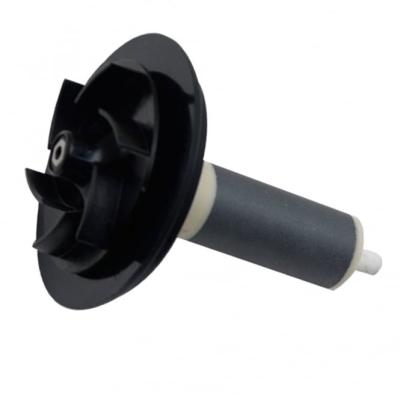Pump Maintenance & Troubleshooting

Below, we have highlighted a few tips which can help increase the life expectancy of your pump.
• Clean your pump – Regular cleaning prevents blockages which prevents the unit from overheating. This means opening up the strainer cage and cleaning the impeller chamber based on the original instructions that came with your pump. If you do not have a copy of the instructions, you should be able to find an electronic copy on the manufacturers website or through your retailers website.
• Prevent blockages – Keeping your water flowing is important; try to avoid putting the pump in cages or awkward locations which fill up with silt or sludge. It is best to locate the pump at the bottom of your pond, but raise it by 5cm (2"). By raising the pump off the bottom of the pond, the pump will sit above the sludge, which reduces the maintenance needed, prevents blockagaes and improves the lifespan of the pump.
If you are experience any issues with your pump, please follow the below tips to troubleshoot your pump:
• Is the pump receiving water? – It might be obvious, but sometimes the pump can run dry depending on its location, if you have had particularly hot weather or if there has been a leak in your pond somewhere.
• Is there any power going to the pump? – You could be experiencing a fault with the power supply; as with anything electrical, please refer to a qualified electrician.
• Does the unit make a noise when turned on? – If the unit is making a noise, it indicates that the unit is operating, the electrics are fine and there is something else occurring. Please refer to your pump instructions and check the impeller chamber, as it is likely there is a blockage or a fault with your impeller.
• How regularly is the pump cleaned? – It might be that blockages in your pump is reducing the output, or it could have damaged the pump. As above, we advise cleaning your pump based on the instructions that originally came with your product. Depending on the weather and the condition of the pond, this could be between 1 week to 4 weeks.
• Is the pump free of debris? – Sludge can be blocking the pump, causing the output to be reduced. As we have previously stated, you should try to raise your pump off the bottom of the pond and regularly clean it to avoid blockages.
• Does the impeller spin with resistance or is it free moving? – The impeller should spin with resistance; if it spins freely and you can hear a noise from your pump, your impeller could be faulty and should be investigated as soon as possible.
• Is your pump vapor locked? – Sometimes, air can get trapped in the pump and prevent it from pushing water. Try to lift the pump up from the bottom of the pond and tilt the pump forwards, backwards, left, and right gently; this removes trapped air in the pump and allows it to operate as normal.
You may also find the below blogs useful:
• Why is my Pump under-performing?
• Pond Pump Maintenance
• Top Tips
• Pond Sludge: How to Prevent and Treat It
If you have any queries, please email us on info@pondkeeper.co.uk.